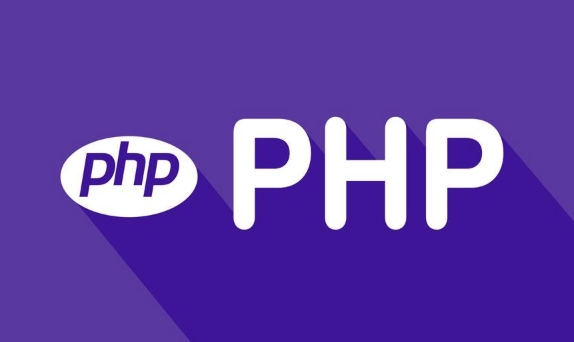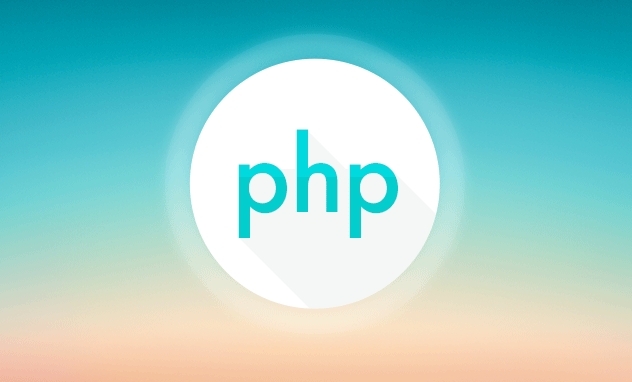 Backend Development
Backend Development
 PHP Tutorial
PHP Tutorial
 What are PSR standards and which ones are widely adopted in php?
What are PSR standards and which ones are widely adopted in php?
What are PSR standards and which ones are widely adopted in php?
Jul 10, 2025 pm 01:15 PMPSR represents the PHP standard recommendation in PHP, and is proposed by the PHP Framework Interoperability Group (PHP-FIG), which is used to unify code style, improve readability and collaboration efficiency. Its core goal is to promote compatibility between different frameworks and libraries, although not mandatory, but widely adopted. Common PSR standards include: 1. PSR-1: basic encoding specification, which stipulates the use of <?php tags, one class per file, StudlyCaps for class names, camelCase for method names, etc.; 2. PSR-4: automatic loading standard, which defines the automatic loading method of class based on namespace and directory structure, and is used by most modern frameworks and Composers; 3. PSR-12: extends the code style specification, adds more detailed format rules based on PSR-1, such as spaces around operators, line breaks after controlling structures, etc. Developers follow PSR standards to improve code consistency, facilitate collaboration, obtain tool support and enhance framework compatibility. Application methods include: using PHP_CodeSniffer to check code, configuring IDE to automatically format, automatically fix format problems through PHP-CS-Fixer, and installing related development dependencies in Composer projects. Mastering PSR-1, PSR-4 and PSR-12 is particularly important for PHP developers, and can significantly improve development efficiency and code quality.

PSR stands for PHP Standards Recommendations. These are coding standards, style guides, and best practices proposed by the PHP Framework Interop Group (PHP-FIG), which is a group formed by several major PHP projects to promote interoperability between different frameworks and libraries.

The goal of PSR standards is to make PHP code more consistent and reusable across different projects. While they're not mandatory, many PHP frameworks and open-source projects adopt them to ensure clean, readable, and maintainable code.
Commonly Adopted PSR Standards in PHP
There are several PSR standards, but some are more widely adopted than others:

PSR-1: Basic Coding Standard
This is the foundation. It defines basic rules like using<?phptags, having one class per file, following StudlyCaps for class names, camelCase for method names, etc.-
PSR-4: Autoloading Standard
Probably the most widely used. It defines how classes should be autoloaded based on their namespace and directory structure. Most modern PHP frameworks and Composer rely on PSR-4 autoloading.
PSR-12: Extended Coding Style
Also known as "PSR-12 Extended," it builds upon PSR-1 and adds more detailed formatting rules, such as spacing around operators, line breaks after control structures, and more.
Other PSRs like PSR-3 (logging interface), PSR-7 (HTTP message interfaces), and PSR-11 (container interface) are also used, especially in larger applications or when integrating with third-party tools.
Why Developers Follow PSR Standards
Following PSR standards helps developers in several ways:
- Improved Readability: Code looks familiar even when switching between projects.
- Easier Collaboration: Team members can quickly understand each other's code.
- Tooling Support: Tools like PHP-CS-Fixer, PHP_CodeSniffer, and IDEs support PSR out of the box.
- Framework Compatibility: Most modern PHP frameworks (like Laravel, Symfony, Zend) follow PSR standards, making integration smoother.
Using these standards doesn't mean you have to write code exactly the same way every time, but it gives you a solid baseline that's widely accepted.
How to Apply PSR Standards in Your Project
If you're starting a new project or cleaning up an old one, here are a few steps you can take:
- Use a linter or code sniffer tool like
PHP_CodeSnifferto check your code against PSR standards. - Configure your editor or IDE to format code according to PSR-12 automatically.
- Set up automatic fixes using
PHP-CS-Fixerin your development workflow or CI pipeline. - If you're building a library, consider following PSR-4 for autoloading and PSR-12 for code style.
Composer makes it easy to install these tools via composer require --dev . Once set up, running them becomes part of your regular development routine.
So if you're working with PHP seriously, especially in teams or open-source projects, getting comfortable with PSR standards—especially PSR-1, PSR-4, and PSR-12—is definitely worth your time. It's not hard to follow once you get used to it, and the benefits show up quickly in terms of code quality and collaboration ease.
The above is the detailed content of What are PSR standards and which ones are widely adopted in php?. For more information, please follow other related articles on the PHP Chinese website!

Hot AI Tools

Undress AI Tool
Undress images for free

Undresser.AI Undress
AI-powered app for creating realistic nude photos

AI Clothes Remover
Online AI tool for removing clothes from photos.

Clothoff.io
AI clothes remover

Video Face Swap
Swap faces in any video effortlessly with our completely free AI face swap tool!

Hot Article

Hot Tools

Notepad++7.3.1
Easy-to-use and free code editor

SublimeText3 Chinese version
Chinese version, very easy to use

Zend Studio 13.0.1
Powerful PHP integrated development environment

Dreamweaver CS6
Visual web development tools

SublimeText3 Mac version
God-level code editing software (SublimeText3)
 PHP Variable Scope Explained
Jul 17, 2025 am 04:16 AM
PHP Variable Scope Explained
Jul 17, 2025 am 04:16 AM
Common problems and solutions for PHP variable scope include: 1. The global variable cannot be accessed within the function, and it needs to be passed in using the global keyword or parameter; 2. The static variable is declared with static, and it is only initialized once and the value is maintained between multiple calls; 3. Hyperglobal variables such as $_GET and $_POST can be used directly in any scope, but you need to pay attention to safe filtering; 4. Anonymous functions need to introduce parent scope variables through the use keyword, and when modifying external variables, you need to pass a reference. Mastering these rules can help avoid errors and improve code stability.
 How to handle File Uploads securely in PHP?
Jul 08, 2025 am 02:37 AM
How to handle File Uploads securely in PHP?
Jul 08, 2025 am 02:37 AM
To safely handle PHP file uploads, you need to verify the source and type, control the file name and path, set server restrictions, and process media files twice. 1. Verify the upload source to prevent CSRF through token and detect the real MIME type through finfo_file using whitelist control; 2. Rename the file to a random string and determine the extension to store it in a non-Web directory according to the detection type; 3. PHP configuration limits the upload size and temporary directory Nginx/Apache prohibits access to the upload directory; 4. The GD library resaves the pictures to clear potential malicious data.
 Commenting Out Code in PHP
Jul 18, 2025 am 04:57 AM
Commenting Out Code in PHP
Jul 18, 2025 am 04:57 AM
There are three common methods for PHP comment code: 1. Use // or # to block one line of code, and it is recommended to use //; 2. Use /.../ to wrap code blocks with multiple lines, which cannot be nested but can be crossed; 3. Combination skills comments such as using /if(){}/ to control logic blocks, or to improve efficiency with editor shortcut keys, you should pay attention to closing symbols and avoid nesting when using them.
 How Do Generators Work in PHP?
Jul 11, 2025 am 03:12 AM
How Do Generators Work in PHP?
Jul 11, 2025 am 03:12 AM
AgeneratorinPHPisamemory-efficientwaytoiterateoverlargedatasetsbyyieldingvaluesoneatatimeinsteadofreturningthemallatonce.1.Generatorsusetheyieldkeywordtoproducevaluesondemand,reducingmemoryusage.2.Theyareusefulforhandlingbigloops,readinglargefiles,or
 Tips for Writing PHP Comments
Jul 18, 2025 am 04:51 AM
Tips for Writing PHP Comments
Jul 18, 2025 am 04:51 AM
The key to writing PHP comments is to clarify the purpose and specifications. Comments should explain "why" rather than "what was done", avoiding redundancy or too simplicity. 1. Use a unified format, such as docblock (/*/) for class and method descriptions to improve readability and tool compatibility; 2. Emphasize the reasons behind the logic, such as why JS jumps need to be output manually; 3. Add an overview description before complex code, describe the process in steps, and help understand the overall idea; 4. Use TODO and FIXME rationally to mark to-do items and problems to facilitate subsequent tracking and collaboration. Good annotations can reduce communication costs and improve code maintenance efficiency.
 Quick PHP Installation Tutorial
Jul 18, 2025 am 04:52 AM
Quick PHP Installation Tutorial
Jul 18, 2025 am 04:52 AM
ToinstallPHPquickly,useXAMPPonWindowsorHomebrewonmacOS.1.OnWindows,downloadandinstallXAMPP,selectcomponents,startApache,andplacefilesinhtdocs.2.Alternatively,manuallyinstallPHPfromphp.netandsetupaserverlikeApache.3.OnmacOS,installHomebrew,thenrun'bre
 How to access a character in a string by index in PHP
Jul 12, 2025 am 03:15 AM
How to access a character in a string by index in PHP
Jul 12, 2025 am 03:15 AM
In PHP, you can use square brackets or curly braces to obtain string specific index characters, but square brackets are recommended; the index starts from 0, and the access outside the range returns a null value and cannot be assigned a value; mb_substr is required to handle multi-byte characters. For example: $str="hello";echo$str[0]; output h; and Chinese characters such as mb_substr($str,1,1) need to obtain the correct result; in actual applications, the length of the string should be checked before looping, dynamic strings need to be verified for validity, and multilingual projects recommend using multi-byte security functions uniformly.
 Learning PHP: A Beginner's Guide
Jul 18, 2025 am 04:54 AM
Learning PHP: A Beginner's Guide
Jul 18, 2025 am 04:54 AM
TolearnPHPeffectively,startbysettingupalocalserverenvironmentusingtoolslikeXAMPPandacodeeditorlikeVSCode.1)InstallXAMPPforApache,MySQL,andPHP.2)Useacodeeditorforsyntaxsupport.3)TestyoursetupwithasimplePHPfile.Next,learnPHPbasicsincludingvariables,ech






